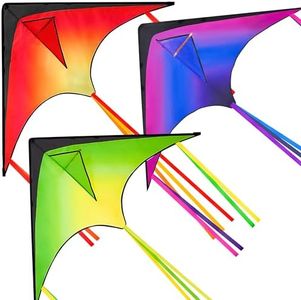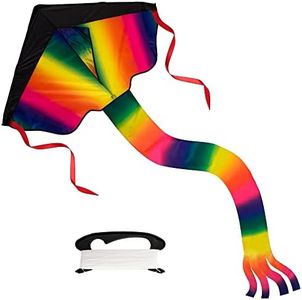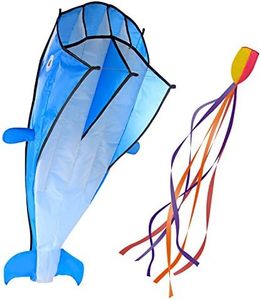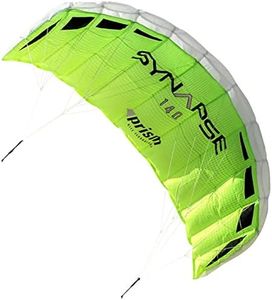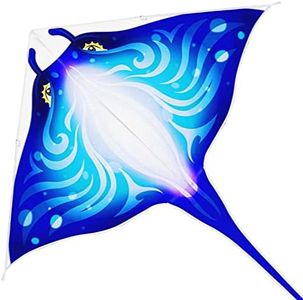We Use CookiesWe use cookies to enhance the security, performance,
functionality and for analytical and promotional activities. By continuing to browse this site you
are agreeing to our privacy policy
10 Best kites
From leading brands and best sellers available on the web.Buying Guide for the Best kites
When choosing a kite, it’s important to think about your experience level, what kind of flying you want to do, and where you plan to fly the kite. Kites come in many shapes and sizes, which makes the process of picking the right one exciting but also a bit confusing. You should consider the wind conditions you typically encounter and whether you'll be flying just for leisure or looking for tricks and sport flying. Carefully look at the specifications as they impact how enjoyable your experience will be.Type of KiteThere are several main types of kites: single-line kites, stunt or sport kites (two-line), and power kites (often with multiple lines). Single-line kites are simple and best for beginners and casual fun, as they’re easy to launch and control. Stunt kites let you perform tricks and require a bit more skill, while power kites are used for strong wind and can pull the flyer—best suited for experienced users. You should consider your skill level and what you want to do with the kite when picking a type.
Size (Wingspan/Surface Area)The size of the kite determines how it behaves in the wind and how easy it is to handle. Smaller kites (under 1 meter wingspan) are best for children or light winds and are easy to control. Medium-sized kites (1-2 meters) are good for teens and adults, offering a balance between stability and excitement. Larger kites (over 2 meters) can generate significant pull, are suitable for strong winds, but may be harder to manage. Choose a size depending on who will fly the kite and the typical wind conditions in your area.
MaterialKite materials affect durability, weight, and ease of handling. Common fabrics include ripstop nylon and polyester, both offering strength and resistance to tearing. Frames are usually fiberglass or carbon fiber—fiberglass is flexible and forgiving, while carbon fiber is lighter and stiffer but more expensive and less durable to direct impacts. If you’re looking for a kite that will last and is easy to handle, opt for ripstop nylon with a fiberglass frame; for advanced or sporty use, consider lighter materials.
Wind RangeEvery kite is designed to fly best within a certain wind speed. A low wind range (e.g., 4–10 mph) is suitable for light breezes, great in sheltered areas or for lightweight kites. Medium wind ranges (8–20 mph) are versatile and cover most recreational uses. High wind range kites (15 mph and up) are made for strong winds and more experienced users. Check the typical wind patterns where you’ll be flying so you select a kite that performs well in those conditions.
Skill LevelManufacturers often indicate whether a kite is suited to beginners, intermediates, or experts. Beginner kites are stable, easy to launch, and forgiving of mistakes, while advanced kites require more precise control and offer greater maneuverability. Match the kite's complexity to your current experience: start simple if you’re new, and move up as you develop skill and confidence.
Assembly and PortabilitySome kites are ready-to-fly out of the package, while others require some assembly, which can take more time and may need additional tools. Consider how easy it is to assemble and disassemble the kite, as well as how compactly it packs down for transport and storage. If you travel often or need something low fuss, pick a kite that’s easy to set up and carry.

